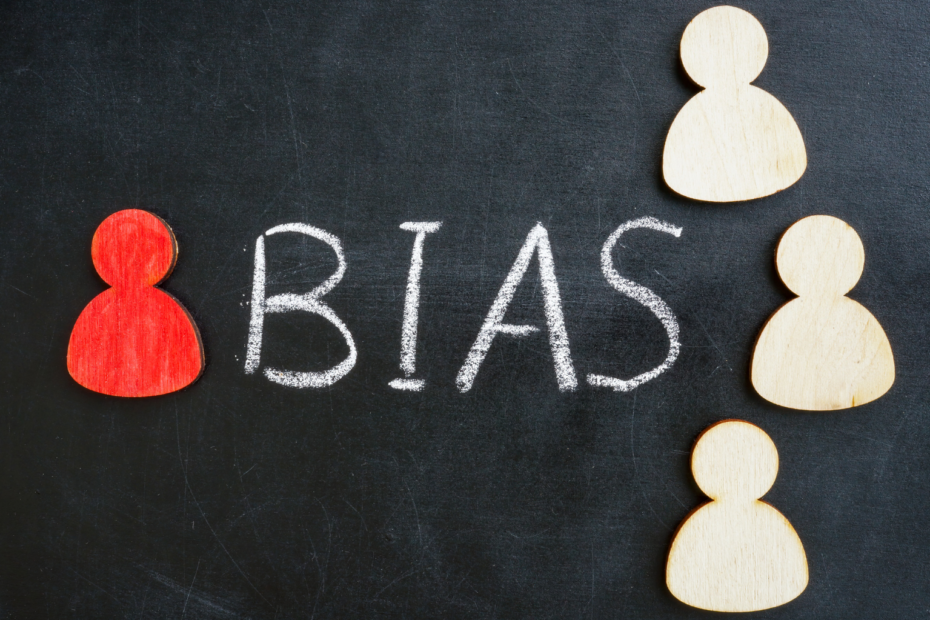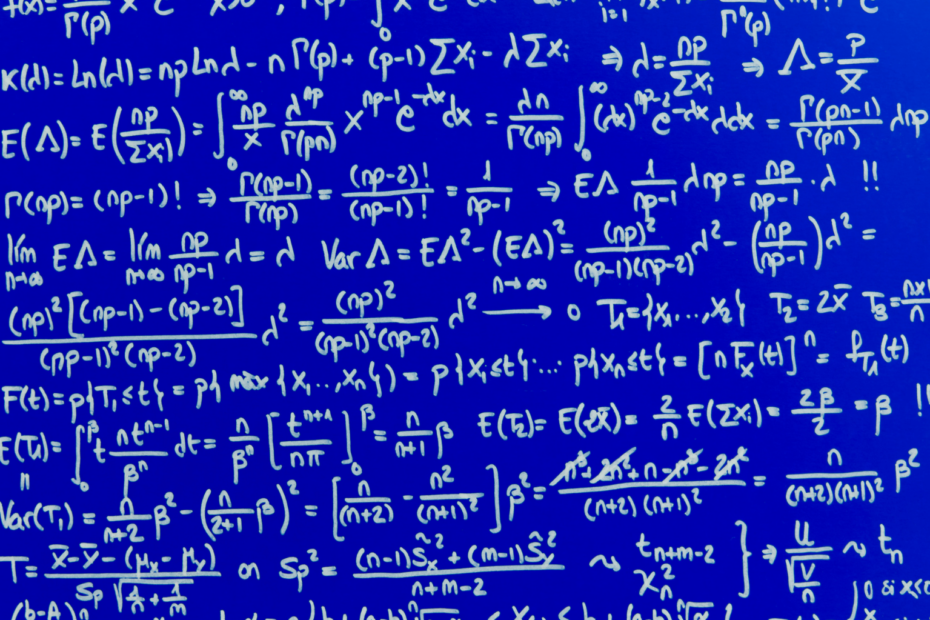Random and fixed effects are used in statistics to analyze relationships between two variables. These effects are used to better explain the variability in the data and thus achieve reliable results that are also easy to interpret. These methods are used in various fields, such as social science, technology or economics.
In this article, both random and fixed effects are explained in more detail and the assumptions on which they are based. We will also take a closer look at their applications in statistical modeling and highlight their advantages and limitations. It is assumed that you already have a basic understanding of statistical analysis and the design of experiments, which will not be explicitly repeated in this article. If not, you are welcome to read our article on correlation and causality, which explains some of the basics.
What is a concrete example of the Effects?
Before we start explaining the individual effects, we want to present an example that will be used in the following sections to illustrate the whole thing. To do this, we assume that we want to explain the performance in mathematics of different pupils. To do this, we will collect data from a total of five schools in different locations. Different teaching styles are tested at these institutions, in which, for example, digital learning is sometimes more and sometimes less in the foreground.
The problem is that the differences between the schools must be included in the model, as they can have an impact on pupil performance. There are various factors that can distort our results and for which we must therefore control. This is because each of these schools has different circumstances that also have an impact on student achievement, but are independent of the learning style, for example the facilities of the school and the social class from which the students come, depending on where the school is located.
Depending on the aim of our study and the generalization of the results, these variables can be dealt with differently. However, the appropriate approach has far-reaching effects on the model and the interpretability of the results, which we will address in the further course of the work.
What are Fixed Effects?
Fixed effects are categorical variables that are used in statistical modeling to control for constant effects that are constant across all observations in a data set. These variables are fixed because they do not change or only change over a constant period of time. Classic examples of such variables are origin, age or gender.
If we consider the differences between the schools in our example as a fixed effect, this means that we assume that these differences between the schools are systematic and not random. In our model, this would mean that we include an explicit parameter for each school that also has a constant. In this way, we assume that each school has an explicit influence on the student’s performance, which can also be measured in concrete terms. This controls for any difference between schools.
What are Random Effects?
Within a statistical model, random effects help to ensure that heterogeneity in the data sets that cannot be directly explained is nevertheless taken into account. In contrast to fixed effects, it is assumed that the variable is not constant within a data set, but is drawn from a probability distribution. It is therefore assumed that the differences between groups are random and not systematic.
For our example, this would mean that the differences between the schools are not systematic, but random. In the model, this would be included by including a random factor for the choice of school and not explicitly controlling for each of the five schools. Random effects are mainly used when the information within the dataset is clustered or grouped and the number of observations per group is rather small. The inclusion of random effects then ensures that the peculiarities of a group are not overly taken into account
What impact do these effects have on our example?
There are now two ways in which we can approach the investigation of the math performance of different students.
In a first scenario, we can consider the school and its characteristics as a random effect. This means that we assume that the five schools are merely a random sample from a larger population of schools. Since we want to draw conclusions about the entire population of schools, we consider them as a random effect in order to include in the model that each school has a certain variability. This effect is used to account for the so-called unobserved heterogeneity between schools, for example due to different teaching styles or the location of the school. This allows us to evaluate the effects of student characteristics on math performance while still accounting for the influence of school differences.

Alternatively, the school can also be viewed as a fixed effect. This makes sense especially if we want to focus on the specific schools and their students and are not interested in drawing conclusions across these schools. By classifying them as fixed effects, the differences are considered as time-invariant characteristics that are constant across the different schools.
Overall, the choice of effects depends primarily on the research objective and the basic assumptions that are made. A model with the school as a random effect allows the results to be transferred to other schools, whereas a model with fixed effects only focuses on comparisons between schools. Thus, random effects are suitable for generalizing and capturing differences between groups and fixed effects are suitable for comparisons within groups.
What are the advantages and disadvantages of using Random Effects?
Random and fixed effects are two important terms in statistical modeling. They refer to the variability in the data. dRandom and fixed effects are two basic distinctions in statistical modeling that refer to the variability in data sets. With random effects, it is assumed that the differences in a data set are part of a probability distribution and are therefore randomly distributed. This approach has its own advantages and disadvantages:
Advantages of random effects:
- Unobserved heterogeneity within the data is accounted for in the model, allowing for more accurate estimates of the other parameters, making the results much more generally applicable.
- Random effects can be used to model correlation structures within the data. These are particularly useful for data sets that contain clusters.
Disadvantages of these effects:
- In order to obtain a more accurate estimate, a larger sample size is required to estimate the probability distribution. This can lead to problems in some studies.
- The interpretation of the results can be made considerably more difficult by random effects, especially if the factor has several levels.
Random effects require careful testing of theaccounting for unobserved variability, but they require careful consideration and interpretation. It is important to choose the appropriate modeling approach based on the research question and the nature of the data.
What are the advantages and disadvantages of using Fixed Effects?
Fixed effects modeling assumes that all differences between observations are time-invariant and can therefore be captured and controlled by individual effects. In plain language, this means that any change that does not occur due to the independent variables is simply due to the difference between individuals. This method is particularly common within social science and medical research.
The advantages of fixed effects models include:
- Control for unobserved heterogeneity: Differences between data points can have an impact on the controlled variable. Fixed effects make it possible to control for these differences at the individual level. This allows for more unbiased estimates of the independent variables, as the different variables are held constant.
- Consistency and efficiency: Fixed effects are also widely used because they often provide consistent estimates of the coefficients, even when there is a correlation between the independent variable and the individual effects. In addition, all information within the data set is used, which is why fixed effects are particularly efficient with the data.
- Useful for analyzing panel data: Fixed effects are particularly useful when working with panel data, i.e. data sets in which the same people are measured over a certain period of time. The differences in a person that arise over time can thus be taken into account.
The disadvantages of these models include
- Limited generalizability: Fixed effects models can only be used to estimate the effects of a variable within a specific population. In many cases, however, the results can only be generalized to a limited extent. This is due to the assumption that the effect of an independent variable is constant across all individuals.
- No estimation of time-invariant variables possible: These models are not able to estimate the effects of variables that do not change over time. This is because the fixed effects absorb all other time-invariant differences in the data set.
- No estimation of omitted variables possible: If variables that are constant over time and individuals are omitted from the model, their influence cannot be estimated by the model. This is because they are considered unobserved heterogeneity of the fixed effects.
Fixed effects models are therefore useful when unobserved differences in panel data need to be controlled for. They also provide consistent and efficient estimates of thevariables. However, they may have limited generalizability and cannot estimate the effects of time-invariant or omitted variables.
What is a Mixed Effects Model?
Mixed effects models are a special type of model that includes both random effects and fixed effects in the data analysis. They are used to analyze data that has multiple observations from the same person, group or cluster. This allows much more accurate estimates of relationships and correlations to be made.
This approach offers several advantages, such as
- Improved accuracy: By including both effects, more accurate estimates can be obtained and therefore a higher accuracy of the model can be achieved.
- Ability to deal with clustered data: These special models lend themselves to panel data from the same individuals, groups or clusters that traditional models struggle with.
- Flexibility: Mixed effects models are versatile and can handle unbalanced data and missing values.
However, the use of mixed effects models also has some disadvantages. These include:including:
- Increased complexity: The inclusion of both effects makes the interpretation of the results significantly more complex, especially if there are several random effects or interactions.
- Limited generalizability: The inclusion of fixed effects means that the results can only be generalized to a limited extent and may only be applicable to the specific groups or clusters.
- Potential overfitting: Models with mixed effects are also at risk of overfitting if they are too complex or the sample size is not large enough.
Overall, mixed effects models are a very powerful tool for analyzing data sets, which can be particularly interesting for panel data. However, the associated disadvantages of this analysis method must also be taken into account. several observations of the same individuals, groups or clusters. However, like any statistical method, they have both advantages and disadvantages that should be carefully considered when selecting a suitable method of analysis.
What is the Omitted Variable Bias?
Omitted variable bias describes a problem that occurs primarily in regression analysis. It deals with the case where a relevant variable that has an influence on the dependent variable is not included in the model. This can lead to distorted results in the regression coefficients and significantly influence the interpretation of the results.
In the context of models with fixed and random effects, the coefficients can be just as distorted, as the model assumes that the omitted variables are not correlated with the independent variables. This leads to problems in particular if the omitted variable is correlated with both the dependent and the independent variable. In the case of random effects, this leads to the variance component being incorrectly estimated.
To avoid this problem, researchers should base their choice of variables on previous empirical findings and also consider which factors are measurable and have an influence on the dependent variable. Insufficient preliminary work in this area can lead to falsified results and inadequate findings. After a data analysis, a sensitivity analysis can also be helpful, which measures the robustness of the results against omitted variables. If there is a high sensitivity here, alternative models should be tried out or additional data collected.
What is an example for the Omitted Variable Bias?
Suppose we want to set up a study to investigate the relationship between physical activity and weight loss in more detail. To do this, we collect data from a random group of people and measure their level of physical activity (in hours per week) and their weight loss over a twelve-week period. However, by limiting ourselves to these two variables, we are omitting an important factor that has a major influence on weight gain or loss: diet.
This means that our study has an omitted variable bias in this design, as an important variable was not included. However, the problem is further complicated by the fact that this omitted variable correlates with our independent variable, exercise. People who exercise more will presumably also pay more attention to their diet and possibly eat a significantly healthier diet, which leads to weight loss.

This problem leads to an omitted variable bias. The results of our study are very likely to be biased and overestimate the relationship between exercise and weight loss. This overestimation results from the fact that people who exercise more probably also have healthier eating habits and lose weight more quickly due to these two factors. In the data analysis, the effect of exercise is therefore overestimated, as it includes not only the exercise component, but also the unmeasured component of healthy eating.
The same effect also occurs in the other direction, as we have a negative correlation between exercise and weight loss, so less exercise is likely to lead to weight gain. This bias is also due to the omitted variable “diet”. Therefore, careful consideration should be given to which variables should be included in such modeling in order to make the most accurate estimate of the effect of exercise.
This is what you should take with you
- Random and fixed effects are essential concepts in statistical modeling and analysis.
- Random effects assume that differences between data points originate from a probability distribution. Fixed effects, on the other hand, assume systematic differences that are invariant over time.
- These effects are used in a wide variety of applications, such as the social sciences or medicine.
- The choice of effects depends on the specific research question, the data set and the assumptions made about the data.
- With the help of mixed effects models, both random and fixed effects can be taken into account in a model. However, this makes it more difficult to interpret the results.
- Omitted variable bias is a major problem in regression analysis and also has a negative impact when using random and fixed effects.
- To prevent it, all variables that have an influence on the dependent variable and could also be correlated with the other independent variables should be defined.
What is Gibbs Sampling?
Explore Gibbs sampling: Learn its applications, implementation, and how it's used in real-world data analysis.
What is a Bias?
Unveiling Bias: Exploring its Impact and Mitigating Measures. Understand, recognize, and address bias in this insightful guide.
What is the Variance?
Explore variance's role in statistics and data analysis. Understand how it measures data dispersion.
What is the Kullback-Leibler Divergence?
Explore Kullback-Leibler Divergence, a vital metric in information theory and machine learning, and its applications.
What is the Maximum Likelihood Estimation?
Unlocking insights: Understand Maximum Likelihood Estimation (MLE), a potent statistical tool for parameter estimation and data modeling.
What is the Variance Inflation Factor (VIF)?
Learn how Variance Inflation Factor (VIF) detects multicollinearity in regression models for better data analysis.
Other Articles on the Topic of Random and Fixed Effects
The Portland State University published an interesting article about the differences between these effects that can be found here.

Niklas Lang
I have been working as a machine learning engineer and software developer since 2020 and am passionate about the world of data, algorithms and software development. In addition to my work in the field, I teach at several German universities, including the IU International University of Applied Sciences and the Baden-Württemberg Cooperative State University, in the fields of data science, mathematics and business analytics.
My goal is to present complex topics such as statistics and machine learning in a way that makes them not only understandable, but also exciting and tangible. I combine practical experience from industry with sound theoretical foundations to prepare my students in the best possible way for the challenges of the data world.





